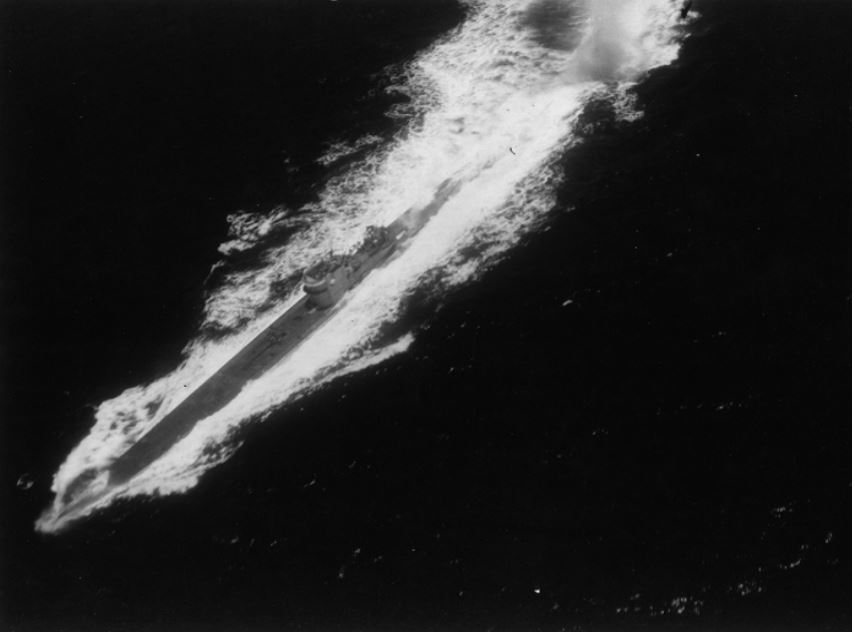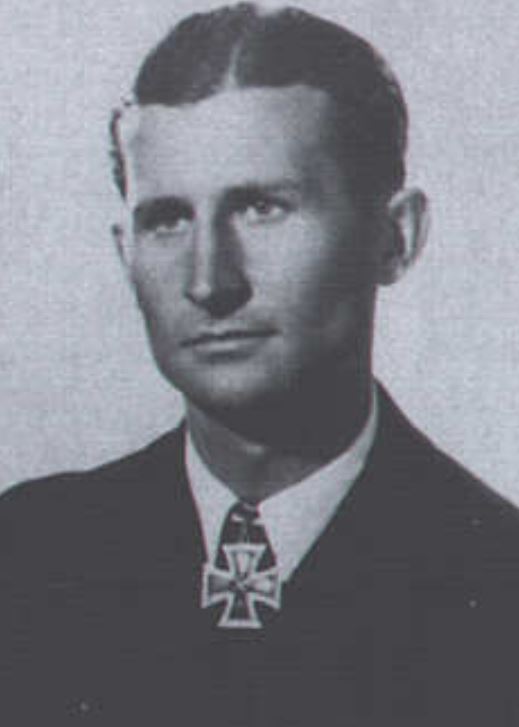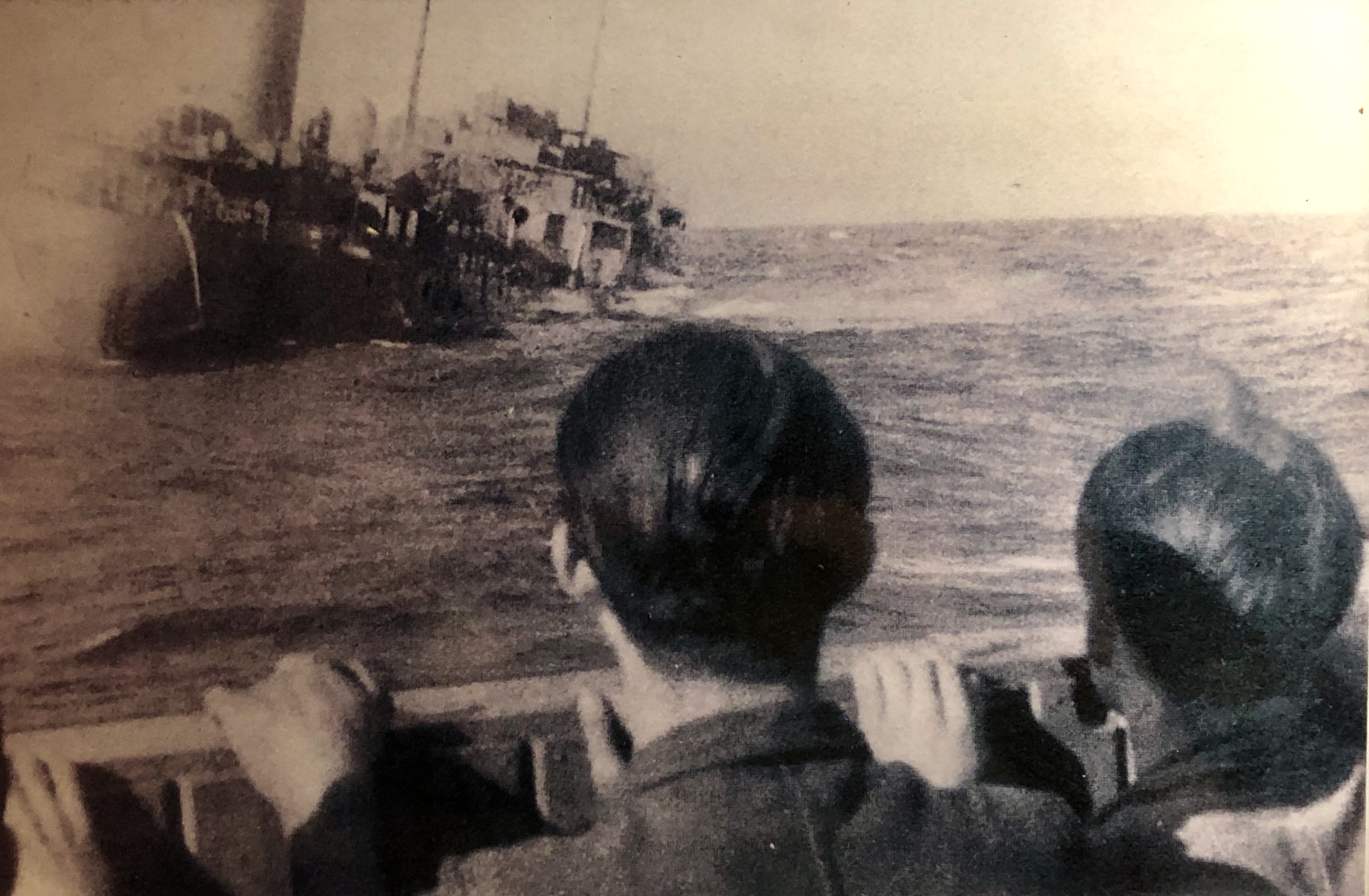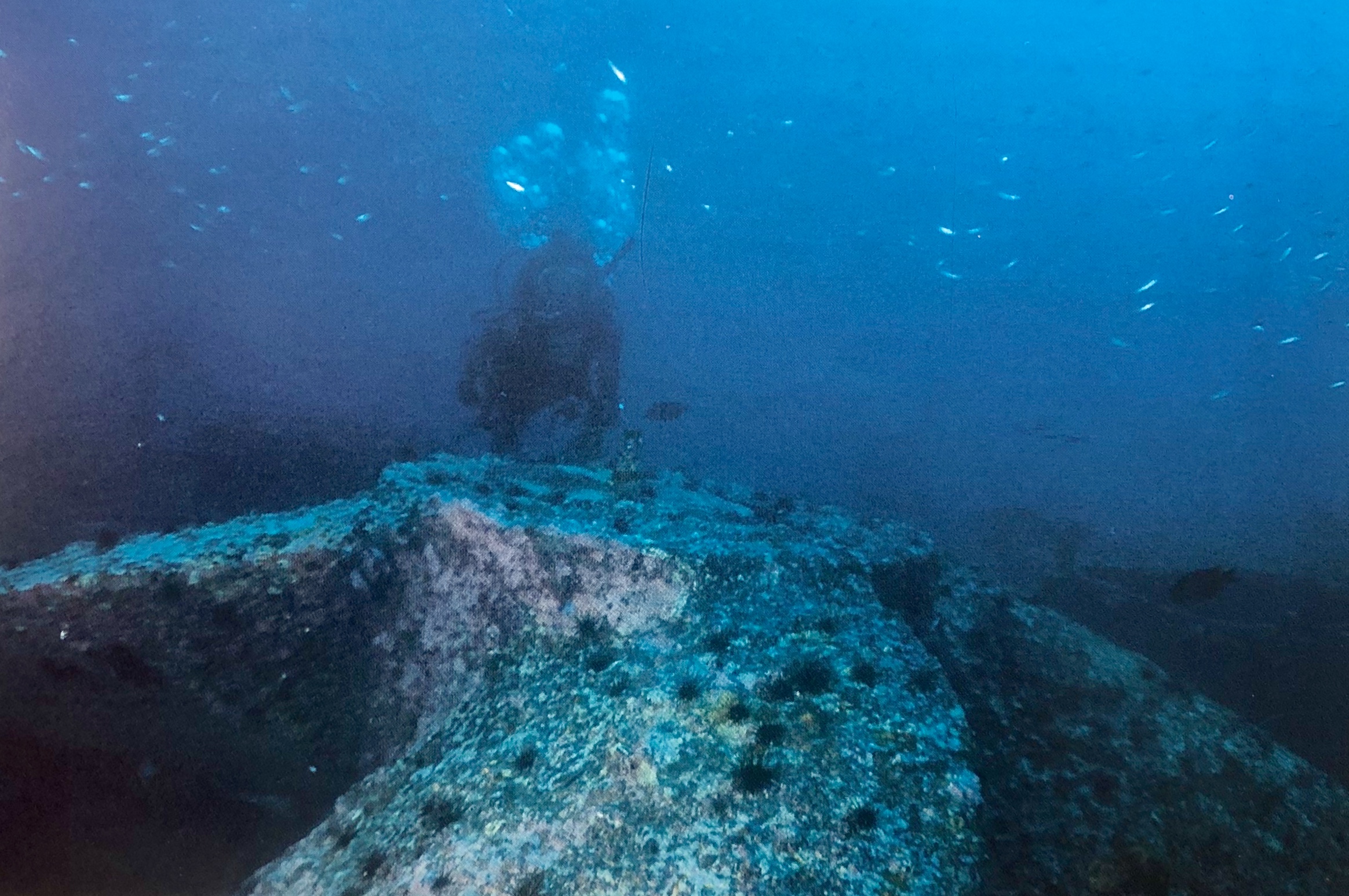The sinking of the Empire Mica
A calm sea, a bright moon – and sudden fiery death
CAPE SAN BLAS —It was just after midnight on Monday, June 29, 1942 and a beautiful summer night in the Gulf of Mexico as the British oil tanker Empire Mica sailed east for Key West and the Florida Straits, where it would proceed up the U.S. East Coast to New York and join a convoy headed for the British Isles.
The bright moon, just a day past full, turned the placid Gulf waters ahead of the ship into a brilliant silver sheen. A gentle breeze washed over Empire Mica’s navigation bridge as the tanker made 11 ½ knots, casting up a small bow wave. No land was in sight, but off the ship’s port beam, a distant flash of white every 20 seconds marked where the Cape San Blas Lighthouse lurked just below the horizon seventeen miles away.
Outbound from Baytown, Texas, with a cargo of 12,000 tons of highly flammable vaporizing oil, Empire Mica was a relatively new addition to the British Merchant Fleet but already a seasoned veteran of the maritime struggle between the Allies and Nazi Germany. Built in 1941 the tanker had already made eleven trans-Atlantic crossings, including five laden with petroleum supplies meant for the British Isles.
Master Hugh Gordon Bradford Bentley led a crew of forty merchant seamen and seven British naval gunners who manned a 4-inch naval cannon and eight machine guns. Three officers and six crewmen were on watch as the ship’s clock struck midnight Central War Time (CWT), a permanent imposition of daylight savings time ordered by the federal government four months earlier. The ship was in a darkened state and steaming under radio silence.
Despite a strict system of censorship suppressing details of shipping losses in American waters, Bentley and his men were well aware that U-boat attacks in the Gulf, now in their ninth week, were showing no signs of ending. With a significant number of sinkings taking place along the direct southeast route from Texas and the mouth of the Mississippi to the Florida Straits, Bentley chose what he thought was a safer route. He opted not to steer Empire Mica on the 710-nautical-mile straight-line course, but instead steamed along the 100-fathom-curve hugging the Louisiana, Mississippi, Alabama and Florida Gulf Coast. Approaching Cape San Blas, Bentley and his lookouts would have been gazing to the east-southeast for subsequent lighthouses marking where the coastline turned south at Florida’s Big Bend.
They would never see them.

Just thirty-five minutes earlier, lookouts on the Type IXC U-boat U-67, busily scanning the Gulf with their powerful Zeiss binoculars, sighted what they first called out as two small vessels approaching fast about forty degrees off the U-boat’s starboard bow. Bounding up the ladder from the U-boat’s control room to the cramped bridge above the conning tower, Kapitänleutnant (Lieutenant Commander) Günther Müller-Stöckheim quickly realized that the shadow was actually a large oil tanker on a converging course.
Both the commander and his crew were hardened veterans of the war at sea. During four previous patrols, U-67 had sunk four Allied merchantmen totaling 24,833 gross registered tons (GRT) and on this, its fifth patrol, the boat had sunk two more ships and damaged a third for an overall total just short of 39,000 GRT. Now, at Müller-Stöckheim’s command, his crew raced to their battle stations.
For the next hour and thirty-five minutes, U-67 shadowed the British tanker as it continued toward the waters south of Apalachicola.
“It is very bright,” Müller-Stöckheim later wrote in his Daily War Diary, “but I hope he does not recognize (the presence of a U-boat) very much.” At 00:50 hours, with the Empire Mica just three-fourths of a nautical mile away, he called out “Los!” (Release!) and two steam-driven G7a torpedoes raced out from two of the boat’s four torpedo tubes.
In the raging maritime struggle at sea, sheer luck was often the deciding factor in a ship’s survival or destruction. However, the encounter between U-67 and the British tanker was actually the result of two things: prudent reckoning by Master Bentley that was canceled out by the shrewd calculation of Müller-Stöckheim.
Since leaving the French port of Lorient on May 20, U-67 followed the general course track used by other boats deploying to southern waters. Exiting the Bay of Biscay, Müller-Stöckheim directed his U-boat to hug the shoreline of neutral Spain, then struck a general course to the southwest, passing by the Azores, then proceeding to the east of Bermuda and – on the 25th day of its four-week transit to the Gulf – entering the Bahamas Channel separating the British colony from the north coast of Cuba. He held the U-boat to a fuel-economy speed of less than 10 knots. This leisurely pace gave the crew plenty of time to vigorously drill in crash-dives, artillery fire and torpedo attacks.

When U-67 came upon the 2,220-ton Nicaraguan freighter Managua in the Florida Straits on June 15, Müller-Stöckheim did not hesitate. A single G7e electric torpedo broke the back of the coastal steamer, sinking it in just eleven minutes. After briefly pausing by a life boat to question the master about the ship, its cargo and destination, U-67 continued west into the Gulf. Müller-Stöckheim knew where the hunting would be best: at the mouth of the Mississippi River some 500 nautical miles to the northwest.
Arriving there five days later on June 20, U-67 torpedoed but only damaged the 8,221-ton Norwegian tanker Nortind, which was able to escape up the Mississippi to New Orleans. Two days later, Müller-Stöckheim and his men had better luck with the 3.664-ton American tanker Rawleigh Warner, which sank in just ten minutes after being struck by a pair of torpedoes. But for several days after that, U-67’s lookouts peered at an empty horizon where there should have been a plethora of targets. U-67’s commander decided to look elsewhere.
In the early hours of June 24, Müller-Stöckheim wrote in his Daily War Diary, “Came to course 10 (degrees). Intention: operate on traffic from and to Pensacola and Mobile …. ” The next day, after dodging several patrol planes but still seeing no ships, he wrote, “Since nothing was met during the advance to the east, it is logical to assume that if traffic is in fact evading to the east, it moves to the north just offshore … Probably Cape San Blas will be the focal point.”
That logic would yield U-67 one of its richest targets thus far.
On board Empire Mica, the midnight-to 0400 watch was quietly conning the ship. Bentley, two other officers and three crewmen manned the tanker’s bridge, while three other crewmen were serving as lookouts on its raised after deck. Then, two of the stern lookouts simultaneously saw U-67’s conning tower and the incoming torpedo wakes. Bentley, in a report to U.S. naval authorities twelve days later, said, “[B]ut before alarm could be sounded, the first torpedo struck slightly abaft of amidships port side, followed by a second torpedo a few seconds later which struck on port side slightly forward of the after deck.”
The twin blasts ripped open Empire Mica’s hull and ignited the 12,000 tons of vaporizing oil. A colossal fireball engulfed the tanker and rose into the sky where it was seen by civilians on shore from Cape San Blas to Apalachicola.
In the fiery carnage, 33 of Bentley’s people on board (27 crewmen and six of the seven gunners) perished in the flames, including the occupants of two life boats that were caught by the flaming oil on the surface of the water. Bentley and 13 survivors managed to escape the inferno. They were rescued by a Coast Guard auxiliary vessel after four hours and landed at Apalachicola. The next day, Bentley and six of the Empire Mica survivors were taken by boat to Panama City, where they were treated for burns and injuries.
The gutted, burned-out hulk of the Empire Mica drifted for nine hours before finally sinking upright in 120ft of water.
Meanwhile, U-67 reversed course and was returning to the Mississippi River mouth to resume the hunt there. Between July 6 and 13, Müller-Stöckheim and his men sank another three ships totaling 16,099 GRT, before heading for the Florida Straits and their month-long journey back to France.


News Herald Staff Reporter Ed Offley, who has written two books on German U-boat operations in World War II (Turning the Tide, Basic Books, 2011, and The Burning Shore, Basic Books, 2014), has combed the U.S. Navy archives and World War II German naval records to tell the all-but-forgotten tale of war in the Gulf more than three-quarters of a century ago. Next is: "The fog of war."